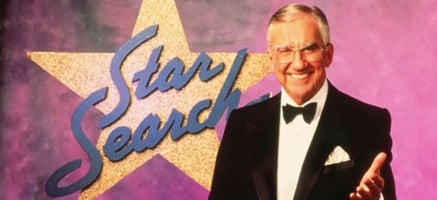My son wants to play baseball professionally. Yeah, I know, get in line. But he's really good. No, really. Wait, did I mention that he pitches, fields and bats both left and right-handed? Ha, now I got your attention. He's really amazing at it. I can hardly write with my left-hand (as a right-handed guy) so to watch him play first base left-handed and then switch to right-handed shortstop in the same inning is crazy (by the way, if any MLB coaches are reading this, yes, we are open to talking salary and Triple A teams now). What also should be known is that he works at it. He is learning how to be better at baseball. He works with baseball trainers and attends clinics. He is motivated to want to know because he sees what it can mean for him (I, also, know what it will mean for my retirement plan!).
We know that many employees have to have a willingness to learn. Most realize that if they are to move ahead in an organization, they need to expand their skill set and be open to new veins of interaction. Furthermore, it makes employees more marketable should they desire to move from one organization to another. Being willing to learn shows an employer that team-player attitude. Managers feel that more than half the battle is won when they are dealing with such a positive commitment from an employee. Often, this trait is measured, to some degree, on performance appraisals and used to assess certain succession plans.
What about switching the perspective, though? What about appraising an organization's willingness to learn? Can't an employee expect his/her employer to demonstrate the same level of desire in learning as the employee is supposed to have?
"Strategic growth" is over-used (even by me...guilty as charged). The intent behind it is to help companies figure out where their paths of improvement and profitability are and where they could be. The problem with the terminology now is that companies tend to think that having a gym in-house counts as their strategic growth initiative. Listen, I'm all for working out (I do it regularly myself, honest!), but that alone is a far cry from what the concept is really meant to be.
When I am privileged to be called in to meet with the executive team, it's often because the company is trying to maintain what it has and figure out how to use it to grow. We have great conversations about competition, innovation, technology, people and marketing. And it's in those conversations that I hear leadership talk about how much "others" have to do. "If we could just get employees to do this better" or "If we had the money to buy that, things would improve" might be shared by the executive team. I take my notes physically and mentally.
Companies need to start with what they can control. What do they have right now that can be built upon? Learning this approach helps to clarify mission and vision rather than re-hash wish lists and missed opportunities. You can't get to the level of excellence desired if you're held down by what didn't happen or what can't happen. There is plenty of what can happen today, in the short-term, to focus upon to meet the long-range goals.
I met with a company that wanted me to help them grow by engaging employees at a richer, more inclusive way. The company said it wanted to have employees involved in directing some of the goals of the company to help create buy-in, but also to create collaboration. For years, apparently, employees had complained that the executive team did not understand life on the production line. The company wanted to move forward in a healthier direction, which they believed would increase production and profit. When I had conducted an employee survey, which included the items mentioned, the results were not surprising to me. Employees were very specific about initiatives that they thought would help the company grow. The survey was completed thoughtfully and challenges were expressed; the employees were extending themselves as part of the solution in the initiatives they were suggesting. As I shared the first employee-suggested initiative for growth, the CEO said, "See, I knew this would happen. They ask too much of us. There's no way we can do that."
Didn't that CEO ask the employees to share in the collaboration process? What did collaboration mean? Just share things with me that I think the company can do today? Weren't the employees allowed to be free in the brainstorming process? Wasn't part of the goal in including employees to create buy-in? What I left with that day was an understanding that the executive team had much more to learn and work through in order to really see growth, sustained growth, in their organization.
Intentions from a company only go so far (and it's not very far, by the way). A company has to see where it wants to be first. Create that vision board, dream and design a bit. Once you know where you want to go, count the costs. If it didn't cost anything, then all companies would be walking that path already. The executive team needs to make a decision as to how much they are willing to invest - in time, publicity, relationships, training, etc. Effort counts, but only if it's towards something that can be measured. Companies don't make money by feelings (good or bad), but only when the health of an organization produces results in service and profit.
A company can't get to success (there) from the same approach (here). Please know that I am not saying that everything has to be thrown out; if a company has tread water over the past five years, even that is saying something is working. Yet, there are processes, markets, innovation and the like that should be explored for further growth. An organization can learn.
Companies should be ready to learn a new approach. A desire to succeed means action plans that will stretch knowledge and skills. So, get in the game, all you executive teams! A swing and a miss is always better than watching the ball go by.




Blog comments